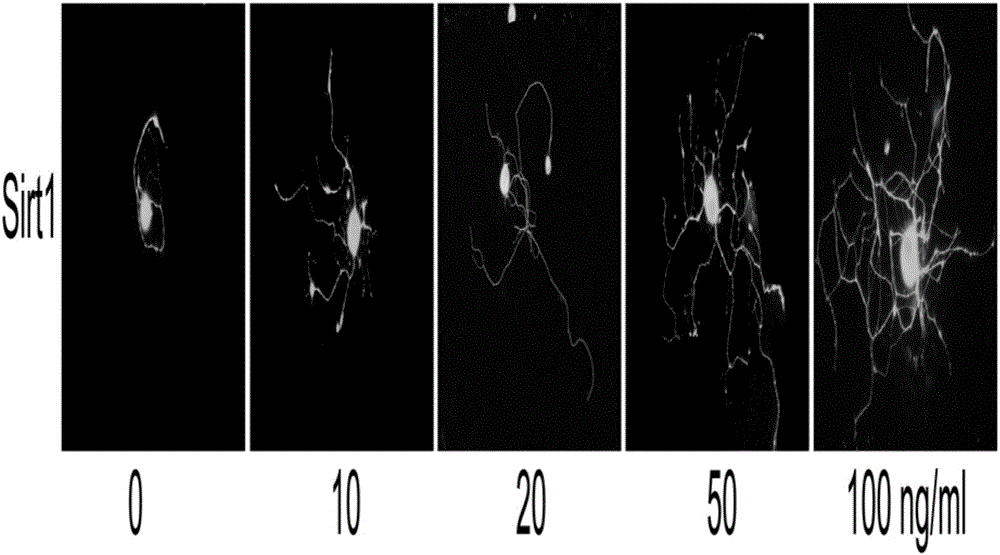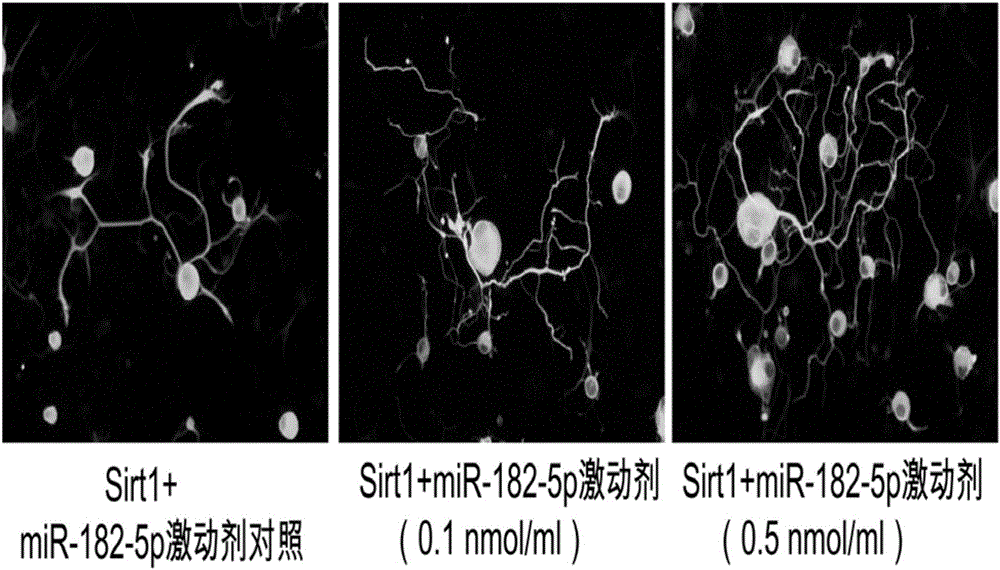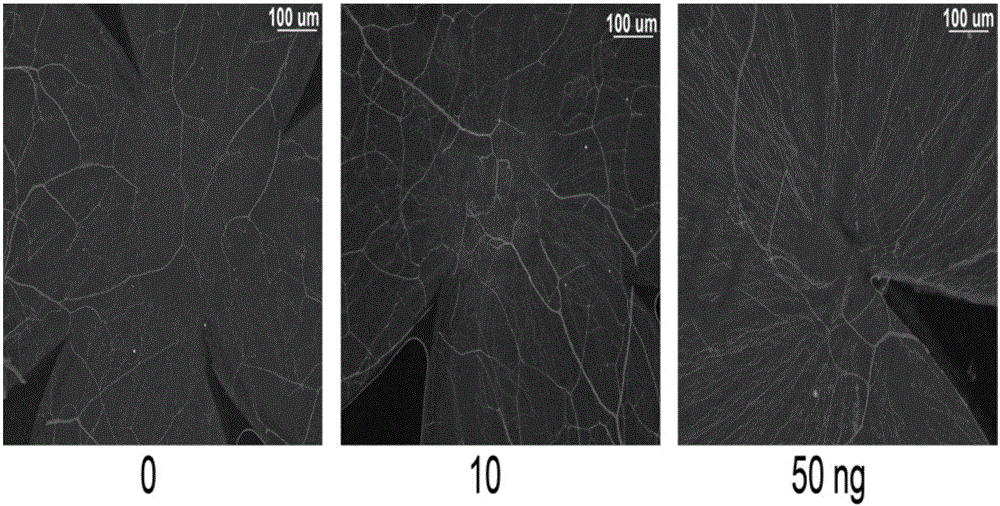Application of Sirt1 in repairing corneal nerve injury
A technology for nerve injury and cornea, which is applied in the application field of silent signal regulator 1 in the repair of corneal nerve injury, and can solve the problems of corneal nerve regeneration and corneal nerve injury repair with little effect.
- Summary
- Abstract
- Description
- Claims
- Application Information
AI Technical Summary
Problems solved by technology
Method used
Image
Examples
Embodiment 1
[0027] Example 1: Sirt1 Promotes Axonal Growth of Mouse Trigeminal Ganglion Cells
[0028] The culture medium of trigeminal ganglion cells ( Medium, Invitrogen / Gibco, Cat. No. 21103-049), plus B27 (10X) (Invitrogen / Gibco, Cat. No. 17504-044). Routine culture of trigeminal ganglion cells, 1000 cells were seeded into 30mm culture dishes, and then in 5% CO 2 Cultured at 37°C, replaced with new medium every 3 days, and added Sirt1 factor at the same time, fixed the cells after 9 days of culture, and stained with neuron-specific marker Tubulin III to observe the axonal growth of trigeminal ganglion cells. Such as figure 1 As shown, after adding 20-50ng / ml Sirt1 to the culture medium, the length of the axon of the trigeminal ganglion cell was significantly increased, and the branch of the axon was significantly increased, indicating that Sirt1 can effectively promote the growth of the axon of the trigeminal ganglion cell.
Embodiment 2
[0029] Example 2: The combination of Sirt1 and miR-182-5p agonist promotes axonal growth of mouse trigeminal ganglion cells
[0030] The culture medium of trigeminal ganglion cells ( Medium, Invitrogen / Gibco, Cat. No. 21103-049), plus B27 (10X) (Invitrogen / Gibco, Cat. No. 17504-044). Routine culture of trigeminal ganglion cells, 1000 cells were seeded into 30mm culture dish, Sirt1 (20ng / ml) was added to the dish, and then in 5% CO 2 Cultured at 37°C, replaced with new medium every 3 days, added miR-182-5p agonist at a concentration of 0.1 or 0.5nmol / ml, fixed cells after 9 days of culture, and stained with neuron-specific marker Tubulin III , to observe the axonal growth of trigeminal ganglion cells. Such as figure 2 As shown, after adding 0.1 or 0.5 nmol / ml miR-182-5p agonist to the culture medium, the axon length of trigeminal ganglion cells was significantly increased, and the axon branch was significantly increased, indicating that Sirt1 and miR-182-5p stimulated The...
Embodiment 3
[0031] Example 3: The effect of exogenous addition of Sirt1 on the repair of corneal nerve damage in normal mice
[0032] Twelve C57BL / 6 mice (6-8 weeks old) were randomly divided into control group and experimental group, and the epithelium in the central 3mm area of the right eye cornea of the mice was scraped using a 3mm trephine drill and an epithelial scraper. 5 μl PBS was injected subconjunctivally in the right eye, and 50 ng Sirt1 (dissolved in 5 μl PBS solution) was injected subconjunctivally in the right eye of the mice in the experimental group, and the neuron-specific marker Tubulin III staining was used to observe the expression level of mice in each group 21 days after modeling. Corneal Nerve Regeneration, representative photographs see image 3 . Such as image 3As shown, subconjunctival injection of 50ng Sirt1 can effectively promote the regeneration of corneal nerves.
PUM
 Login to View More
Login to View More Abstract
Description
Claims
Application Information
 Login to View More
Login to View More - R&D
- Intellectual Property
- Life Sciences
- Materials
- Tech Scout
- Unparalleled Data Quality
- Higher Quality Content
- 60% Fewer Hallucinations
Browse by: Latest US Patents, China's latest patents, Technical Efficacy Thesaurus, Application Domain, Technology Topic, Popular Technical Reports.
© 2025 PatSnap. All rights reserved.Legal|Privacy policy|Modern Slavery Act Transparency Statement|Sitemap|About US| Contact US: help@patsnap.com



